My fascination with how things are made dates back to Mr Rogers’ Neighborhood. As a child, I liked Mr McFeeley the friendly postman, and the trolley ding-dinging to the Land of Make Believe. But for me the highlights of the show were the factory tours Mr Rogers played on Picture Picture, brief but enthralling reels on how guitars are made, or a trip through a crayon factory. It was a revelation to think that, just like people, things have stories too.
Today I’m excited to take us on a field trip to Marin County, north of the Golden Gate Bridge. The orchards of Silicon Valley, south of San Francisco, succumbed to suburban development without much fanfare half a century ago, leaving only solitary backyard fruit trees as reminders of the Valley’s past.
But in coastal Marin you can still see the natural landscape of the region – redwoods, rocky shores and rolling hills – many areas still farmed by the families that came during the Gold Rush to start ranches and dairy farms to serve a booming San Francisco population.
Oyster and dairy farming in Marin County both have a history going back over 150 years. Marin’s grassy hillsides and mild climate make excellent grazing land for cattle, and the estuary off the shores of Marin, with its combination of fresh and salt waters, is a natural breeding ground for oysters.
Hog Island Oyster Company
Founded 30 years ago in Marin’s narrow Tomales Bay by three young marine biologists, two of whom continue to manage the business today, Hog Island takes a scientific, sustainable approach to producing some of the best oysters around.
Oysters don’t move, so conditions for breeding need to come to them. Happily, a nearby marine canyon off the coast produces a rich zooplankton population, combined with the jet stream to pump the sea’s feed straight into the open mouths of the Hog Island’s famed “Sweetwater” Pacific oysters. This is sustainable farming in partnership with nature, completely different from farmed salmon raised on corn pellets.
It takes 18 months to three years to grow an oyster at Hog Island. Fifteen hundred baby oysters are housed in one of these cylindrical stanways, which rock with the tides. Tumbling in the stanways creates stress on the oysters, which prompts them to develop thicker shells that are better for shelf life, with deeper bowls to house plumper meat.
When oysters graduate from stanways, they go into these mesh bags, which are flipped periodically to continue to promote shell development. The bags are suspended in an intertidal zone, where they spend part of the day out of the water. Oysters only clamp their shell together unless they have to, and being in an intertidal zone develops their shell-closing muscle, both aiding shelf life and adding a nice crunch of texture.
Oysters are sorted and bagged in an open shed right next to the water.
Before being bagged for sale, the oysters take a clean, cold bath in a tank of sanitized sea water for 24 hours, which helps ensure their fresh flavor.
Seafood should be stored at 32-40 degrees to keep bacteria dormant, so the bed of ice is critical. Our guide George recommended just a single drop of lemon juice, and he was right – the crisp brininess of the Sweetwaters needed no embellishment.
George also demonstrated proper shucking technique. Use a small, sharp, thin-bladed knife in or near the hinge. Push knife in and turn knife 45 degrees to open the oyster.
This wasn’t as easy as it looked.
The oysters tasted like the freshest possible sea water. George’s wise tip: don’t eat oysters anywhere you wouldn’t drink the water. Good idea for any seafood, but even more so with filter feeders like oysters.
Hog Island’s motto: shuck to live, live to shuck (printed on the back side).
Hog Island sells 90 percent of its oysters within 100 miles of its farm. The majority are consumed at one of its two oyster bars, one at the Ferry Building in San Francisco, and one in Napa, and at local restaurants such as San Francisco’s Zuni Cafe and Berkeley’s Chez Panisse.
Visitors may reserve a shuck-your-own-oyster table at the Hog Island Oyster Farm in Marshall, CA, about 50 miles from San Francisco. The first 20 miles is easy highway driving; the rest is on smaller, often curvy roads to the coast. Some of our group got a little queasy on the bus ride over, but thankfully we recovered before the oyster tasting.
Cowgirl Creamery
Next stop was Cowgirl Creamery, in nearby Point Reyes Station, to taste some of its award-winning cheeses. If oysters are only as good as the water they live in, cheese is only good as the milk it comes from. No surprise that Cowgirl Creamery cheeses are built on the exceptional organic milk of Straus Family Creamery.
Albert Straus was the first Marin County dairy farmer to convert to organic farming in 1994, a time when struggling local dairy farmers were selling milk to a regional cooperative for less than the price it took to produce it. Albert’s success selling organic milk for 30 percent more encouraged dairy farmers in the surrounding area to follow his lead.
In 1997, Sue Conley and Peggy Smith, two local restaurant veterans inspired by Europe’s many small but very successful specialty cheesemakers, founded Cowgirl Creamery to make cheeses using Straus’s organic milk.
Cowgirl began with fresh cheeses: creme fraiche, like the ultimate in sour cream, and fromage blanc, a French version of cream cheese made with whole milk. Both very pure in flavor and creaminess, greeted with oohs by our tasters.
Like yogurt, creme fraiche can also be used as a starter to make more batches of creme fraiche – a dangerously good idea.
Michael, who runs the Tomales Bay retail location, gave a cheesemaking demonstration, a version in miniature of the activity in Cowgirl’s original cheesemaking room on the other side of the glass.
Today only one cheese, dependent on the region’s wild bacteria, is made in this 300 gallon tank, while Cowgirl’s other cheeses are made in a larger production facility in Petaluma.
Cheesemaking is a controlled microbial process – as Michael says, “80 percent cleaning and 20 percent production.”
To make cheese, a coagulant needs to be added to the milk. Fresh cheeses may be coagulated with lactic acid (eg lemon juice), but lactic acid isn’t strong enough to hold for aged cheeses.
The traditional coagulant is rennet, from the stomach lining of a calf, lamb or goat kid. Thistle works as a vegetarian coagulant for sheep or goat milk cheeses, but it produces a bitter taste with cow’s milk.
Cowgirl uses a vegetarian, lab-produced microbial rennet, an amber liquid that to me smelled like yeasty dough but reminded others of beer.
Michael had our volunteer cheesemaker, Emilie, stir the milk clockwise, like the milk in the tank. He then had Emilie add the coagulant, then stir one time counter-clockwise to halt the movement of the milk.
To our surprise, the liquid became solid almost instantly. Michael sliced the jellylike cheese with the back of the spoon.
Michael scooped out the cheese into a slotted cup, and we could see the whey start to separate from the curds. The whey, a good source of protein, goes to feed the pigs of a local farmer (Sue points out that the pigs of prosciutto di Parma are also whey fed), and the curds go into molds.
Molded cheeses are floated in a brine tank, then set on an aging rack to grow their brie-like rinds as they mature.
Cowgirl’s most famous cheese is its Mt Tam triple-cream cheese, made with whole milk enriched with cream. A rich, mild, bloomy-rinded soft cheese, Mt Tam is easy to love.
As Michael says, eating Mt Tam is a socially acceptable way to eat a stick of butter. Someone else in the group suggested they market Mt Tam as “low-fat butter,” which I thought was brilliant.
We had a debate on whether or not to eat the rind. Sue does; Peggy doesn’t. I ate mine, of course (chinese grandmas can’t abide waste), and even rind skeptics devoured it all once they nibbled a taste.
With the Mt Tam base, Cowgirl makes flavored cheeses that vary by season. Wild nettle leaves wrap the cheese in the spring, fresh herbs and wildflowers in the summer, ground mushrooms in the fall. We sampled the festive winter cheese, rolled in spicy-sweet pepper flakes.
Last, we sampled a smooth, tangy melting cheese called Wagon Wheel, developed with Judy Rodgers of San Francisco’s Zuni Cafe, especially for her pizzas.
We were saddened to learn from Sue that Rodgers, famous for her dry-brined roast chicken and perfect Caesar salad, passed away just a few days ago of cancer, at the age of 57.
We often view business as a competitive enterprise, but with Cowgirl Creamery, Sue and Peggy have built not just a business but an ecosystem in Marin County. Their barn in Point Reyes Station showcase Cowgirl’s products alongside the products of other local producers. Cowgirl also sells other local products with Cowgirl’s own through its distribution channel of local stores and restaurants.
As Sue says, the farmland of Marin is an isolated place – “the edge of the Earth” – and there is a strong level of community and support among the farmers and food producers. Individually they are small, but through their interconnectedness they have a thriving ecosystem that benefits all.
When development plans threatened to turn the farm fields of west Marin into suburban development in the 1970s, Ellen Straus, mother of Albert, worked with wetlands biologist Phyllis Faber to mobilize residents and start an innovative agricultural land trust that gave farmers liquidity by purchasing their agricultural rights in perpetuity while allowing the farmers to still own the land. The trust has worked with 70 families to preserve over 45,000 acres for farming and has inspired similar efforts in other parts of the country.
When Sue and Peggy applied for a cheesemaking permit 17 years ago, it was the first such application the county had received since before World War II. Now there are 30 cheesemakers in Marin and Sonoma counties, and the organic dairy industry in the region has all the demand it can handle.
The orchards of Silicon Valley gave way to an exciting future of industry, changing the world through technology. But we are fortunate too that Marin’s agricultural legacy has been preserved, so that we can also appreciate that which is made by hand, in nature, and of the earth and sea.

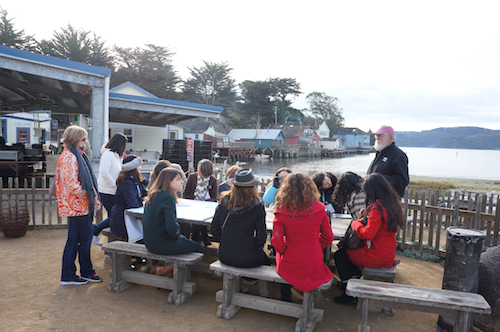
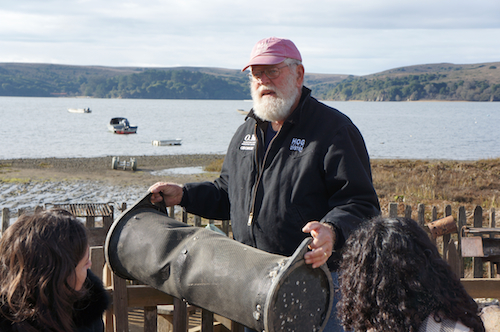
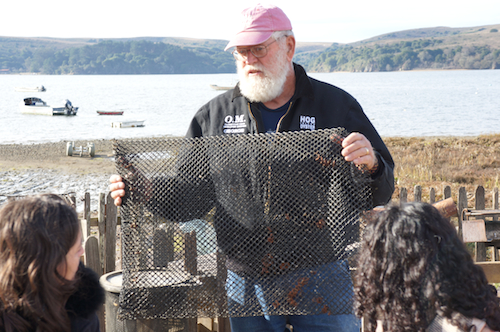
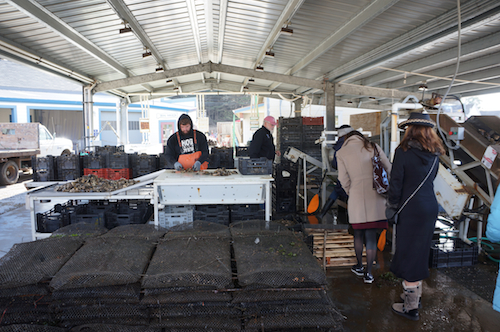
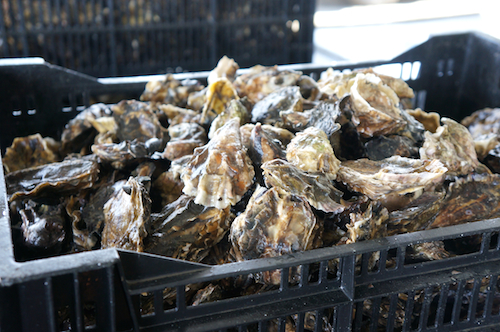

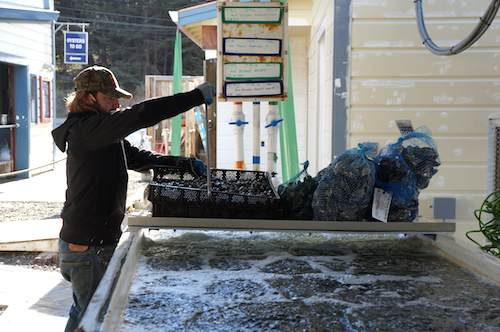

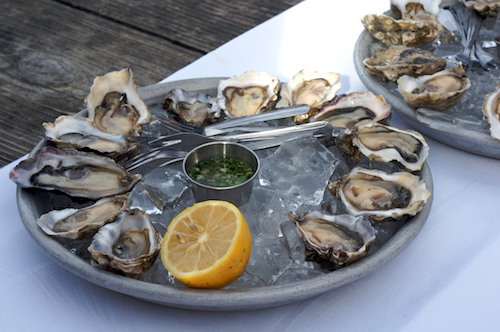
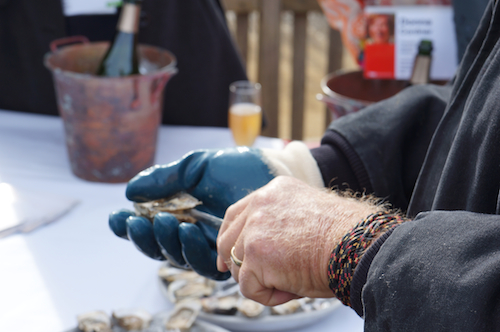
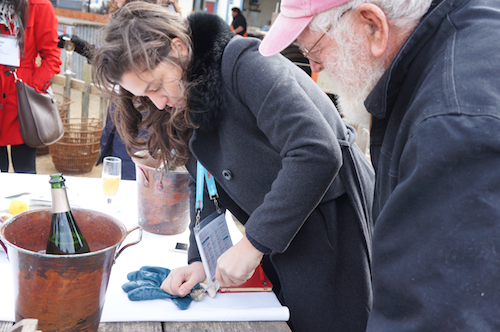
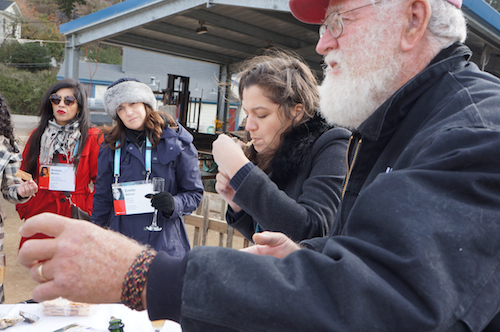
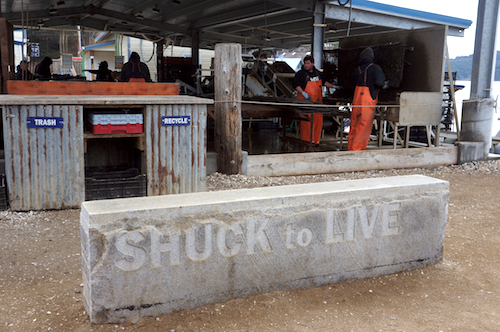
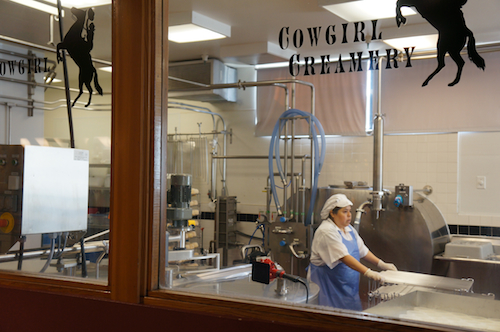
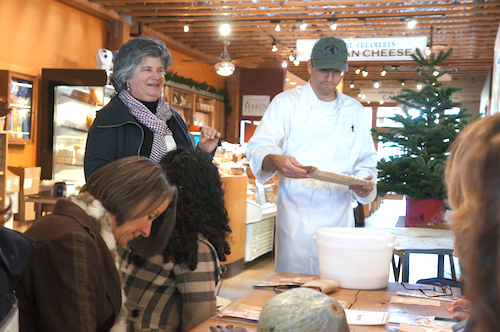

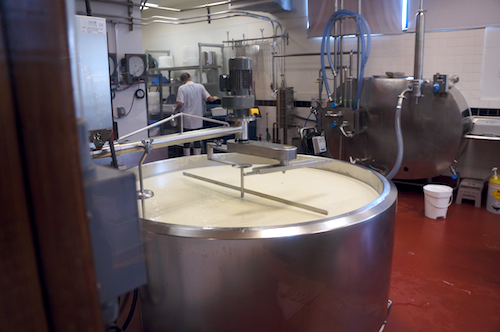
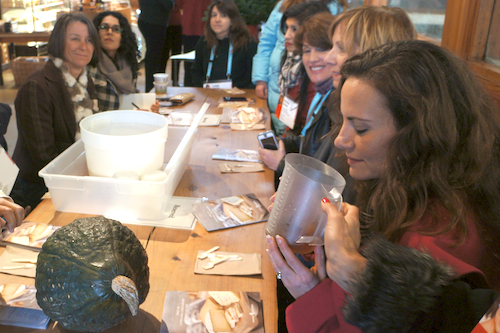
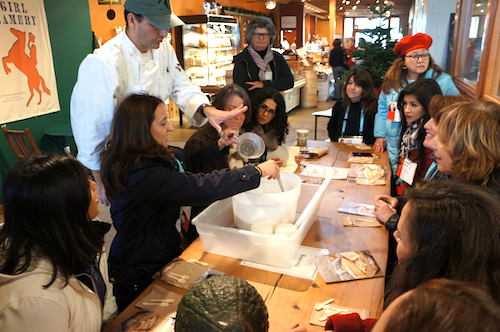
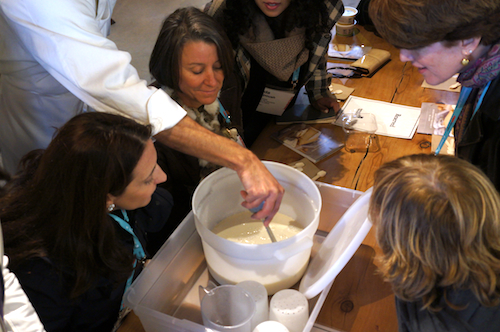
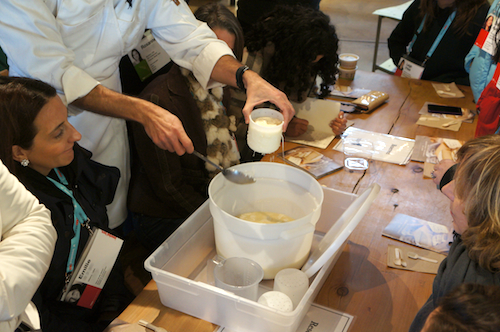
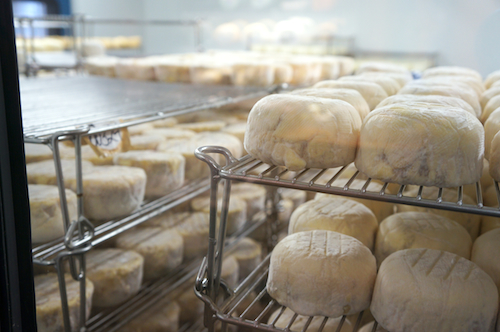
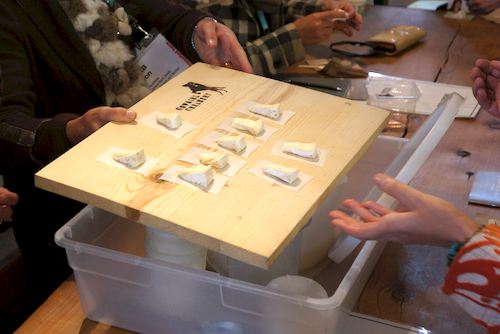

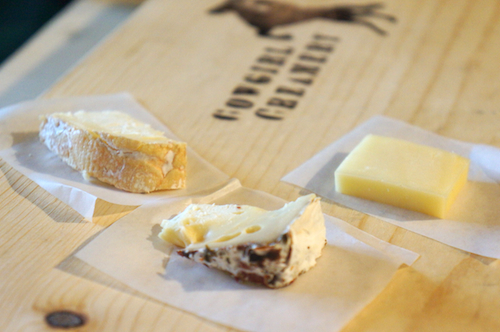




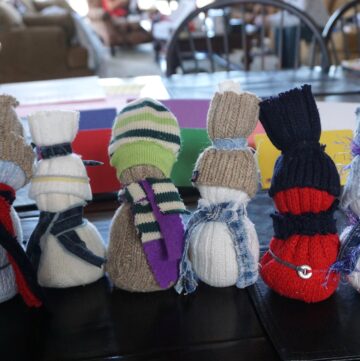
This is an excellent summary of our day and the businesses we visited. Both groups provided really great tours with a range of insights. I would encourage all interested in learning more about how their food is made to try to make it up there, but to choose a sunny warm day to do it! Thanks so much for sharing the post.
hi monica – awesome to spend the day with you!
Took your advice… taking it “SLOW”! Curled up with a warm blanket on a cold, snowy day, at 24 degrees and a wind chill of 6 to enjoy your latest article. WOW… how interesting and informative! At 57 years old, I can say, I have eaten and loved both as long as I can remember, and embarrassingly enough did not know that much about either! Thank you, really enjoyed reading about both and made my day! Guess where we can go when i come visit! LOL! xox
Hi Lilian – thanks for the nice reporting on your visit to Hog Island and
Cowgirl Creamery. I’m sure they enjoyed hosting your group as much as
I did. The only thing you forgot was to mention that the Hog Island tour
converted at least three TEDWomen to eating oysters!!! I’m really
admiring of your positivity which virtually shines through everywhere in
your blogging. Thanks for your work and your inspiring attitude.
George
hi george – thanks so much for your note, and for the fantastic tour. i didn’t know – but i’m not surprised – that three of our group were sold on oysters after tasting your incredible sweetwaters! never tasted a better oyster, and i’m afraid you guys have spoiled me for any other.
Your posts never disappoint. I’m such a fan of both of these places too. I felt like I was on the tour with you.
hi jamie – wish you had been on the tour! but glad you enjoyed the virtual version. =)